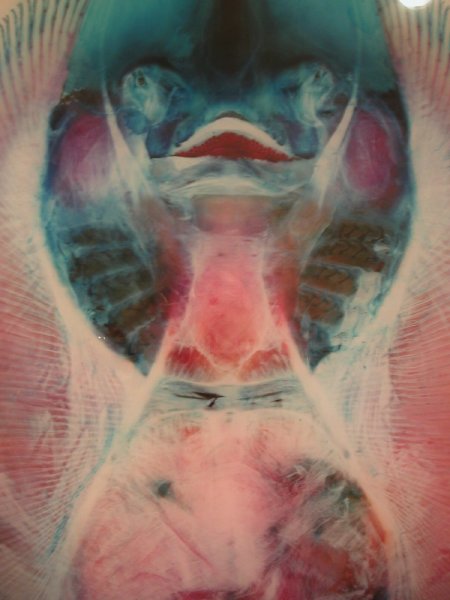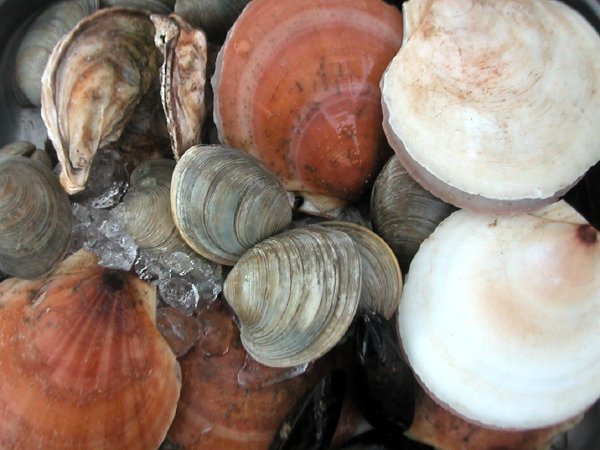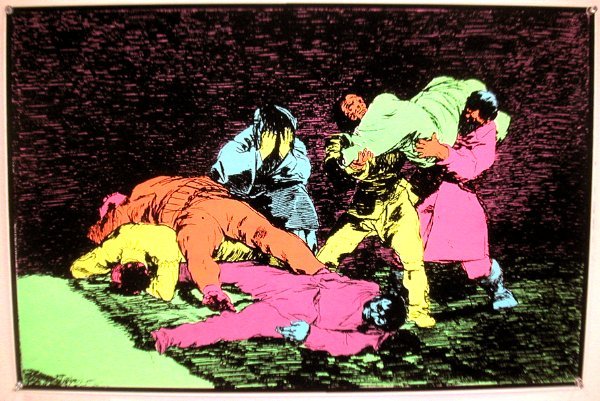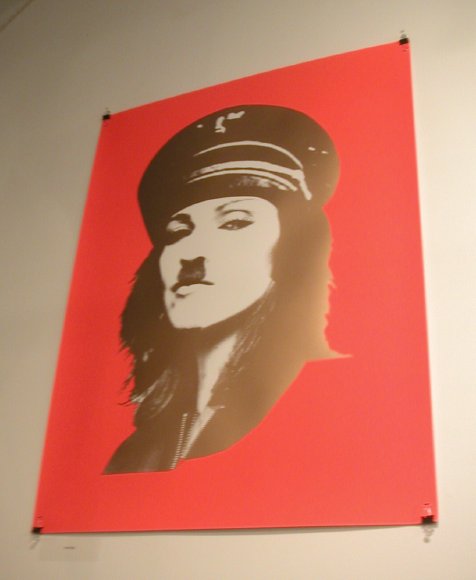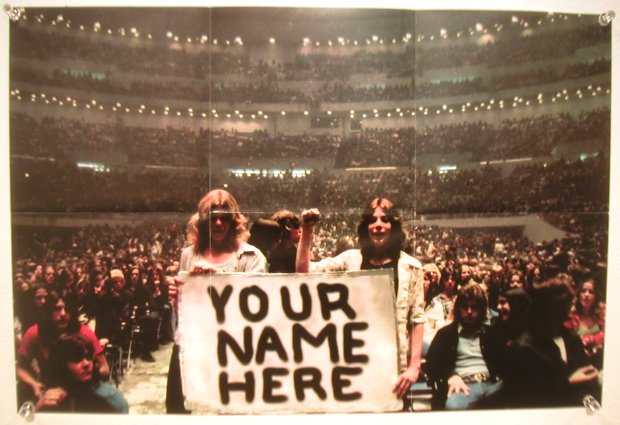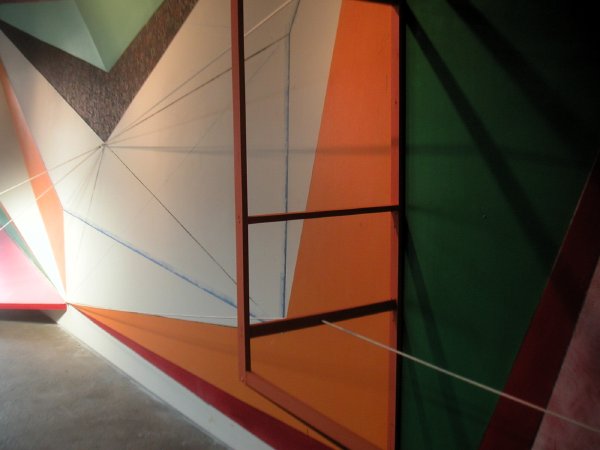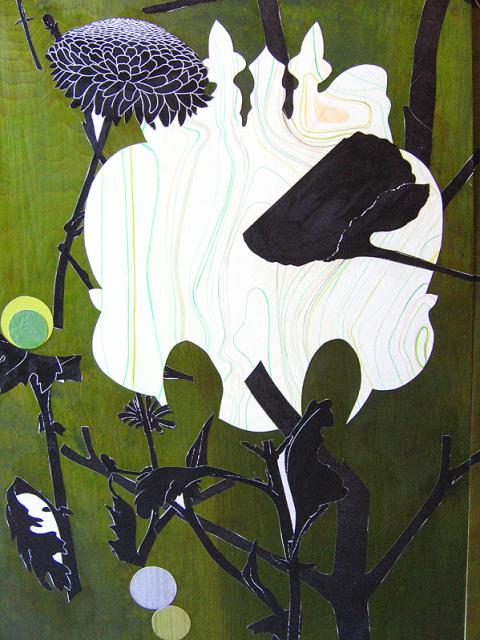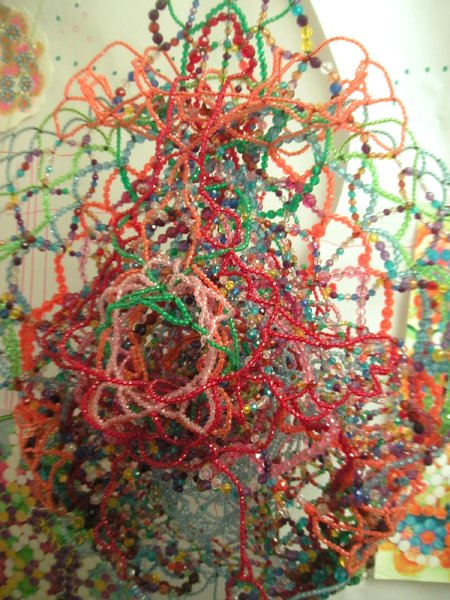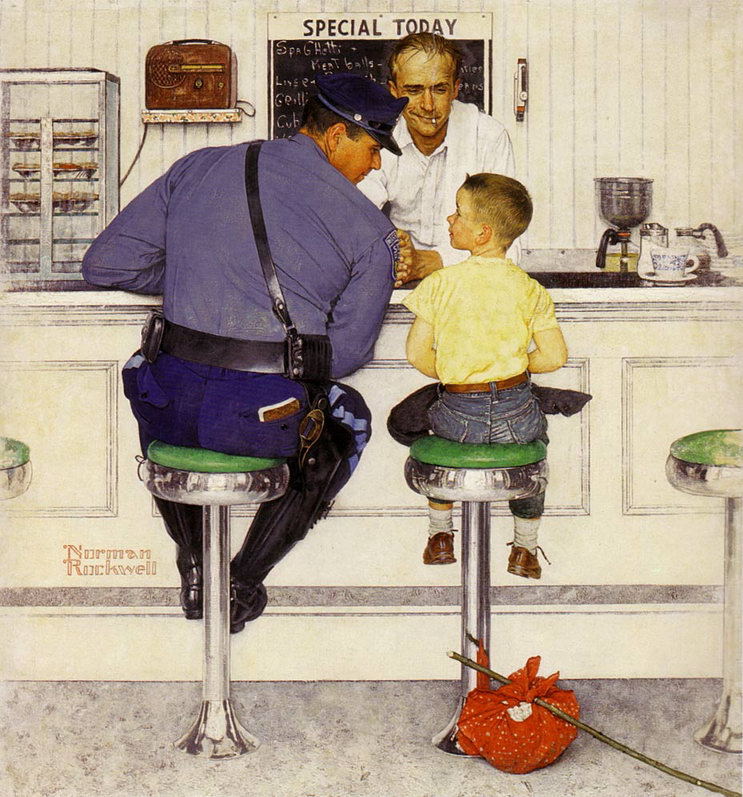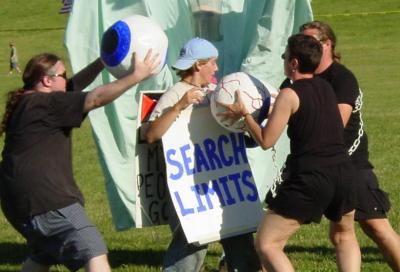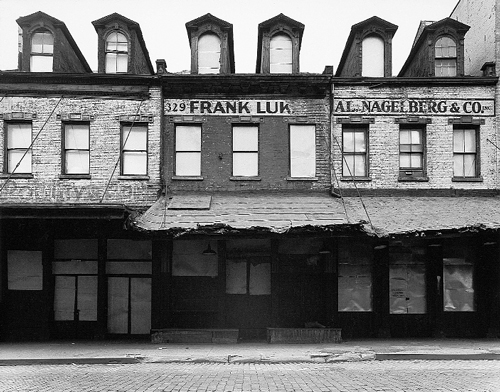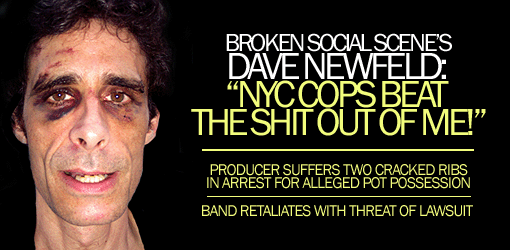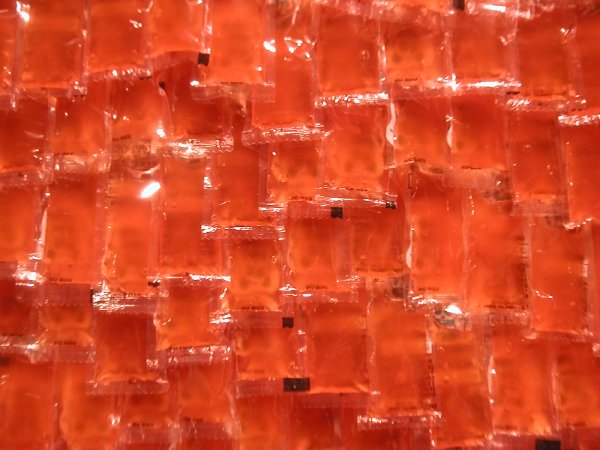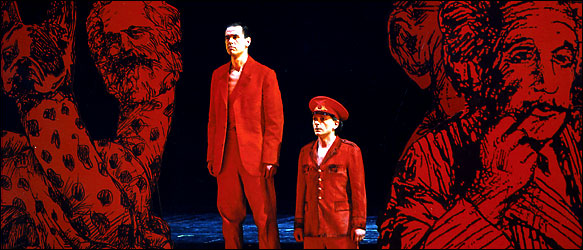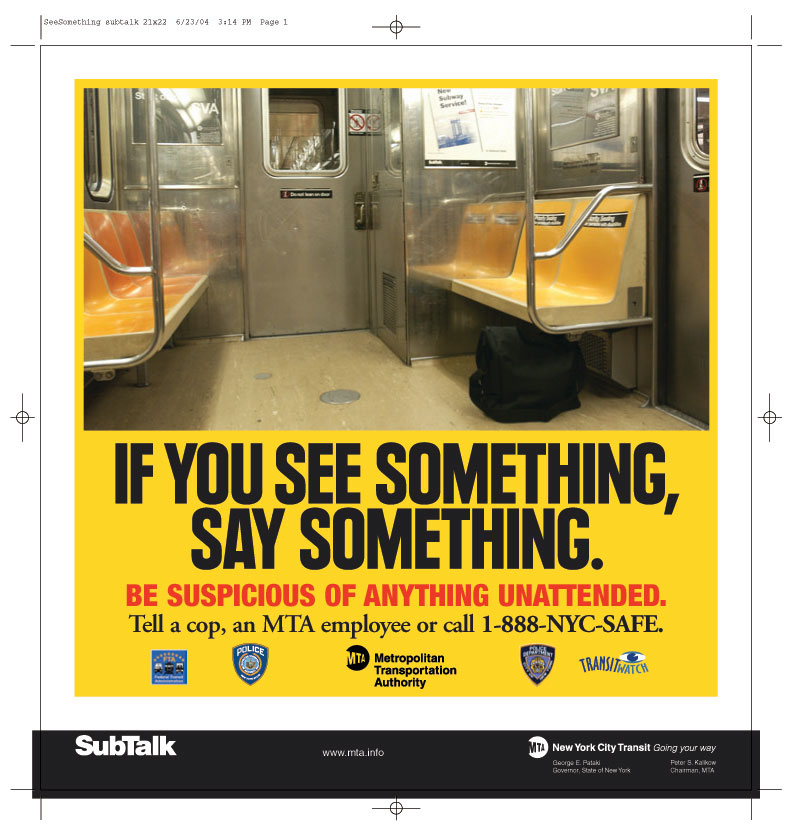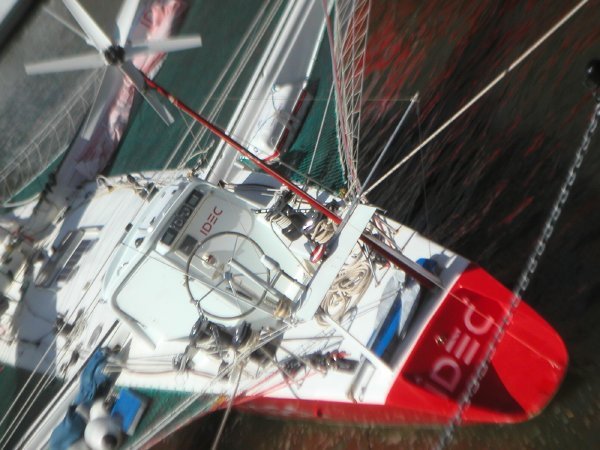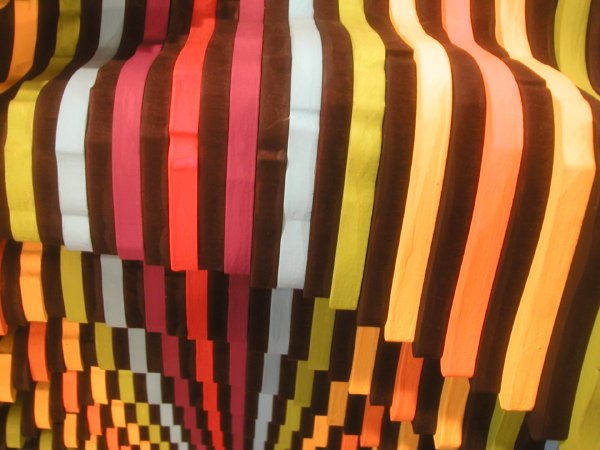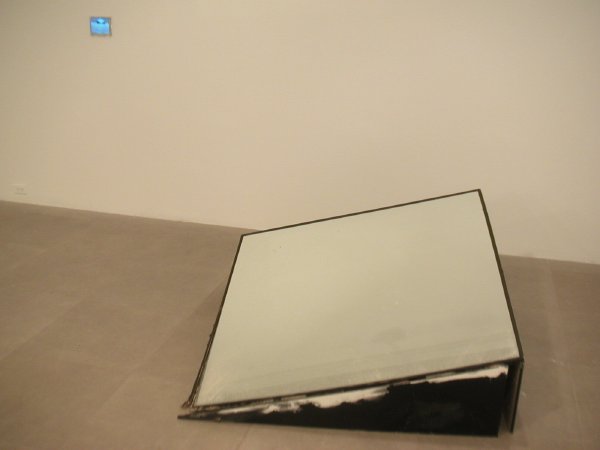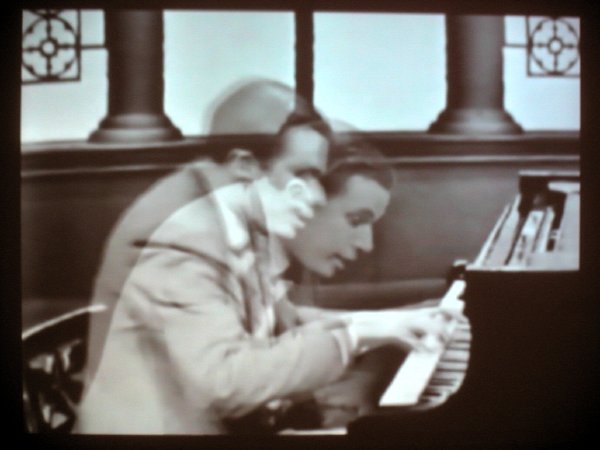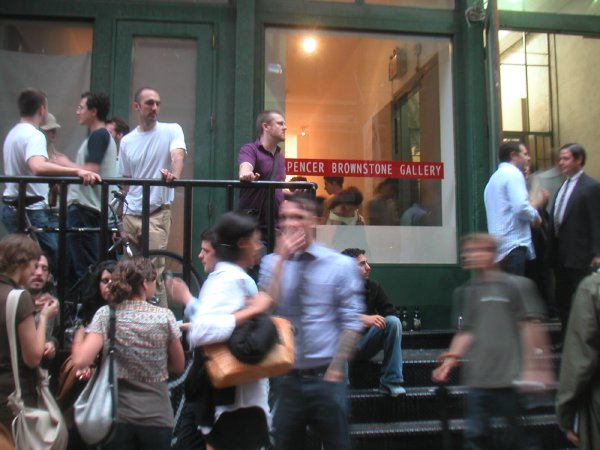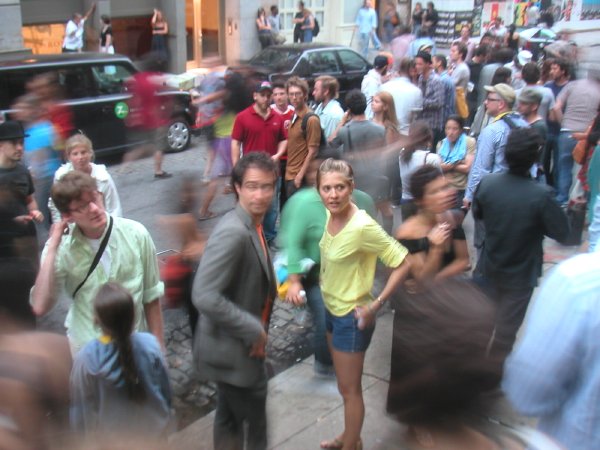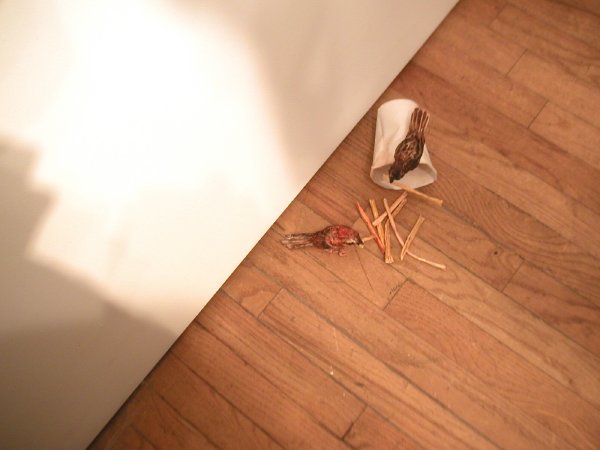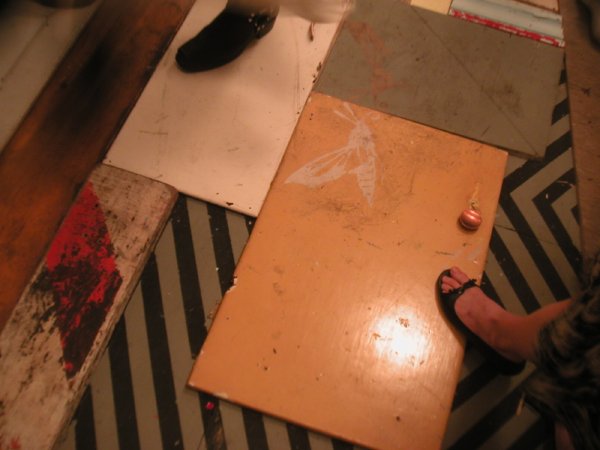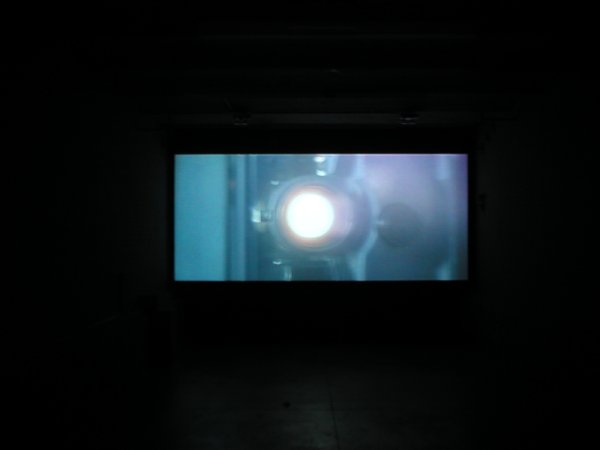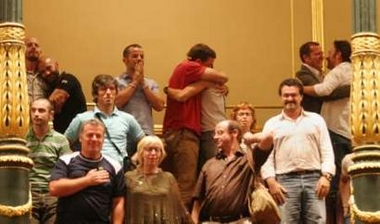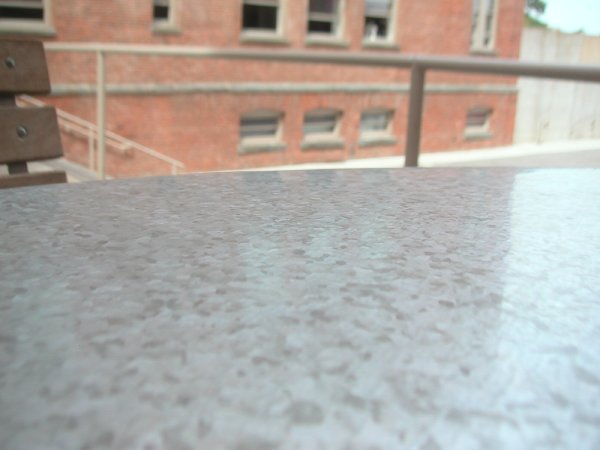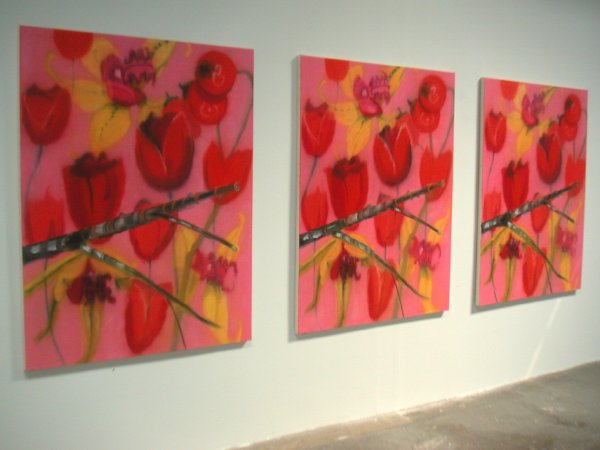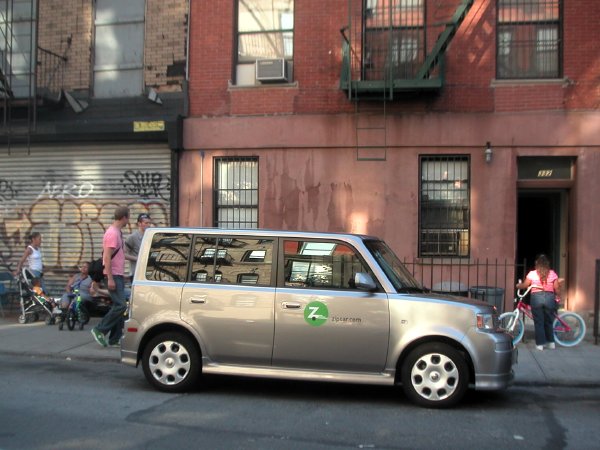
Bubba waiting for us on Bedford Street in Williamsburg today
I have always been interested in cars. Actually, I'm something of a car nut, in spite of my interests and principles otherwise. Yeah, I know, it's 2005 and we now understand how much the automobile has done to destroy the world, but I can't explain my fascination. And I can't help it, if for no other reason than that I live in that world, where the automobile is necessary at least occasionally, even if you're a New Yorker and you really, really hate its cabs.
Barry and I have a new magic carriage. It comes when we call it, a little like Aladdin's ride.
I've always described the subway as a magic carpet, because its there when you need it, it never has to be parked and you can take all your friends with you. But sometimes carpets get tired and they start falling apart. I'm thinking in particular of my experiences with the unreliability of the L train between Manhattan and Brooklyn on weekends, but the cancer has been spreading. It shouldn't take us nearly an hour to get to our home in Chelsea from Soho (that's about two kilometers, or a mile and a quarter), as it did this past Friday.
A few weeks ago we decided to activate a dormant Zipcar membership for the first time because we wanted to get to several openings in Chelsea and a few in Williamsburg on the same night. Alright, I admit it: I missed driving a car. Anyway, we picked "Bubba," which is the name assigned to the wonderful little Scion Xb in the picture above, and that night we carried five friends (two or three at a time) between the boroughs and around the town. We had a ball, in the end stopping for dinner with three of them before we floated back to the garage, crossing the Williamsburg Bridge again and continuing our stately progress up a lively Clinton Street and Avenue B before turning West and heading for home, on a perfect summer evening.
It's a fantastic carriage, and I use the noun advisedly, since we sit high inside a comfortable box, with six or eight extra inches above our heads and several feet between our noses and the upright windshield. A number of travelling trunks can ride secure and dry inside behind the second row of seats. The four doors open wide and if you want you can cross your legs while sitting in each of the passenger seats. There's excellent air conditioning and a great sound system. The car is whisper quiet, well-built and incredibly practical, and you can rent it on line or on the phone, by the hour or the day, picking it up and dropping it off at a garage around the corner (there are no check in or check out lines and no clerks to deal with). The Scion is two feet shorter than a Volkswagen Golf (or is it the Toyota Corolla?). Anyway, it's pretty short, and you can park it almost anywhere. It's just about the unAmerican car.
I have to admit Zipcar's biggest appeal for me was the kind of cars they have available, and not just the short-term feature which must account for much or most of its popularity (you can rent some models for as low as $8.50 an hour, or $65 a day). It's been years since I rented a car in New York (for a day or weekend trip), and I think I only indulged myself twice. I blame my lack of interest in repeating the experience on the incredibly junky choices available from the standard rental companies. And what does it cost now to rent a car in New York on a weekend? I'm guessing around $130 to $150 a day.
I had decided that if I wanted a decent ride I would always have to wait until I got to Europe, where they have cars for people who really like to drive. Zipcar has Volkswagen Golfs, new Beetle convertibles, Scion Xbs, Mini sedans and convertibles, even small Volvos and BMWs for the big spenders, but I'm not going to give up Europe. They have the Smart, and the roads are wonderful too.
We revisited Bubba this afternoon and evening, because we were trying to get to a number of galleries in different parts of two boroughs not easily accessible by subway and on foot. And because we had so much fun last time.
Next up: a short trip into the country, and maybe even a splurge on a little convertible - short term of course.
